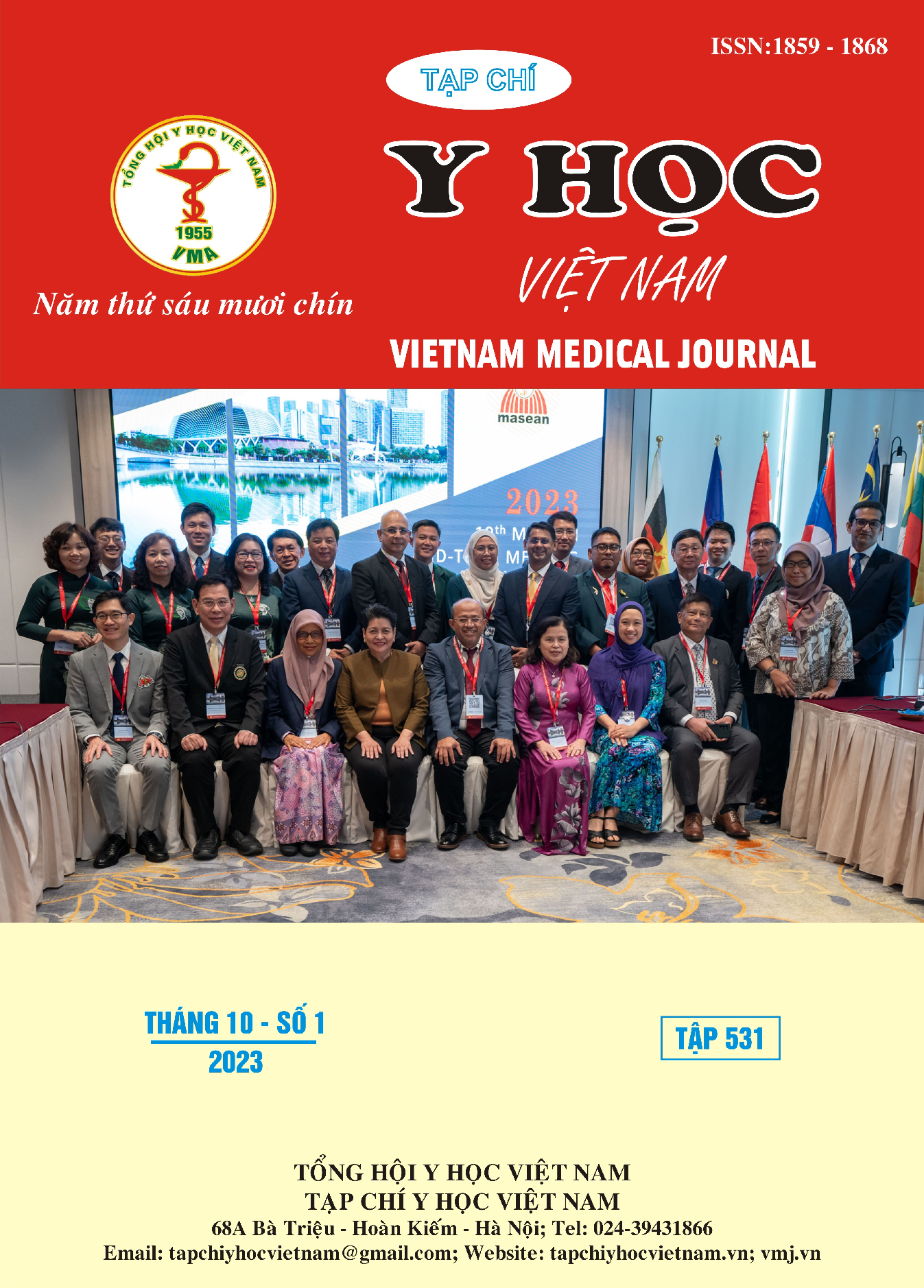THE CHANGES IN CONCENTRATION OF SOME CARDIAC BIOMARKERS FOLLOWING RADIOFREQUENCY ABLATION (RFA) FOR ARRHYTHMIAS
Main Article Content
Abstract
Objectives: This study aims to evaluate the changes in concentration of some cardiac biomarkers (hs-Troponin T, CK, CK-MB, and CRP-hs) following Radiofrequency ablation (RFA) for arrhythmias. Results: Only hs-TnT concentration increased significantly after EPS procedures; however, the mean concentration was still lower than the upper normal limit (UNL). After RFA, 99% of patients had hs-TnT concentration that rose above the UNL, while only 20.2%, 19.2%, and 17.5% of patients had elevated levels of CK, CK-MB, and CRP-hs, respectively. At 3 and 15 hours after the procedures, only hs-TnT and CK-MB concentrations were significantly higher in the RFA group when compared with the EPS group, while the CK and CRP-hs levels were not statistically different. The hs-TnT level following RFA strongly correlated with procedure duration, number of ablations, and total ablation time. Conclusion: hs-TnT was the most sensitive biomarker for myocardial injury after EPS and RFA procedures. Most patients had higher than normal hs-TnT after RF ablation, and this level correlated strongly with procedure duration, number of ablations, and total ablation time.
Article Details
Keywords
Catheter ablation; electrophysiological study; cardiac biomarkers; myocardial injury
References
2. Bhaskaran A, Chik W, Thomas S, Kovoor P, Thiagalingam A. A review of the safety aspects of radio frequency ablation. IJC Heart Vasc. 2015;8:147-153. doi:10.1016/j.ijcha.2015.04.011
3. del Rey JM, Madrid AH, Valiño JM, et al. Cardiac troponin I and minor cardiac damage: biochemical markers in a clinical model of myocardial lesions. Clin Chem. 1998;44(11):2270-2276.
4. Katritsis D, Hossein-Nia M, Anastasakis A, et al. Use of troponin-T concentration and kinase isoforms for quantitation of myocardial injury induced by radiofrequency catheter ablation. Eur Heart J. 1997;18(6):1007-1013. doi: 10.1093/ oxfordjournals.eurheartj.a015358
5. Hirose H, Kato K, Suzuki O, et al. Diagnostic accuracy of cardiac markers for myocardial damage after radiofrequency catheter ablation. J Interv Card Electrophysiol Int J Arrhythm Pacing. 2006;16(3):169-174. doi:10.1007/s10840-006-9034-4
6. Yoshida K, Yui Y, Kimata A, et al. Troponin elevation after radiofrequency catheter ablation of atrial fibrillation: Relevance to AF substrate, procedural outcomes, and reverse structural remodeling. Heart Rhythm. 2014;11(8):1336-1342. doi:10.1016/j.hrthm.2014.04.015


